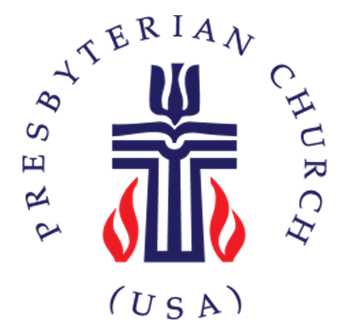History of Music
The Pipe Organ
From the 1950's through the mid-1960's, First Presbyterian Church of Oak Ridge had the only pipe organ in town. How that organ was assembled is a story in itself.
The original pipe organ was the brainchild of Ed Bettis, a nuclear engineer at Oak Ridge National Laboratory and a former member of the Presbyterian Church in Morristown. When he learned that the Morristown church was replacing its tracker organ with a new pipe organ, Bettis arranged for the Oak Ridge church to receive the old Morristown organ as a gift in 1949 when the building plans for the church sanctuary were evolving. His idea was to replace the mechanically-opened valves of this organ with electrically operated valves and to add new pipes to the existing ones. Over a six-month period in 1950, Bettis and his assistants electrified the organ by installing about 1000 magnetic valves with more than 15 miles of wire.
Bettis hauled the organ parts from Morristown to a warehouse behind a store near the present downtown Oak Ridge, where the organ was built and later played. Bettis received considerable help from James Andrews (not a church member), head of the library at Oak Ridge Gaseous Diffusion Plant who had one of the world's largest organ music libraries. Parts of the organ were worked on in church members' homes. Wives of many of the 30 men who worked on the organ brought sweet rolls and pots of hot coffee to the cold, bleak warehouse. Once they had the pleasure of hearing Bettis try out the organ by playing "Nearer My God to Thee." Among the people helping Bettis construct the organ were Stanley Fulkerson, V. G. Lewis, and Bob Lafferty. When it came time to move the organ from the warehouse to the sanctuary, Fulkerson writes, "We realized that we had built a boat in the cellar and couldn't get it out." So part of the warehouse was torn down so that the pipe organ could be moved to the sanctuary.
Annetta (Mrs. T. R.) Jones, the church's first organist, played a small electronic organ developed by Bettis from 1946 through 1950 in Pine Valley School and then the rebuilt Morristown organ in its early days. In July 1953, Mrs. Jones and her family moved to Washington, D. C., so Peggy Carper was employed as church organist, a job she held for 20 years. Bettis contributed to the church in other ways, too. He was well known locally as a "great" Sunday School teacher. He was responsible for the church's present chandeliers, which were constructed from scrap iron, fly screens, pie tins, and plastic. And he led church members in laying sewer lines and sidewalks, building kitchen cabinets, and completing the landscaping and parking lot.
By 1957, it was apparent that the organ's capabilities did not match the needs of the growing congregation, so the Session approved funds for upgrading it. Jimmy Marks, a member of the congregation and an organ buff, Ed Phares, an ORNL biologist, and Joe Lee, a chemical engineer and organ builder (later professionally), located a used organ at St. John's Episcopal Church in Knoxville. This instrument, purchased for $308, became the basis for the new organ. The total cost for the project was estimated to be $1300.
The divisions of the church's organ, which are collections of pipes that make various combinations of sounds, are the choir, swell, pedal, and great divisions. The first three divisions for the updated organ came from the St. John's organ. The great division was built with new pipes. Dick Busey constructed the attractive oak casework for the exposed chest on the wall over the choir seats, and many other individuals helped build the chest, pipe racks, and other parts. One was the late Reverend Harry Hubbell, then 86, who helped install the 445 valves that came from the first organ.
John Bigelow, John Keyes, and A. E. G. (Griff) Bates reprogrammed the combination machine and overhauled other parts of the console (keyboard, pedals, and stops). The combination machine automatically selects different sets of pipes that it turns on or off. The console was originally loaned by Lee, who later sold it to the church for $500. A new one would cost about $30,000 today. By 1960, the partially completed organ was ready to be played, though Mrs. Carper remembers that she had to manage without expression pedals and many of the pipes that were installed later. The organ has been used ever since to accompany the choir and congregation in singing anthems and hymns and to play cantatas and fugues.
The dedicatory concert for the church was given by Alfred Lunsford, a Lutheran organist from Knoxville. In 1962, the first concert for the community using this organ was given by James Bloy of Maryville College, who presented a Coffee Concert sponsored by the Oak Ridge Civic Music Association. From 1978 through 1980, the organ received another upgrade. The Session hired Joe Lee to rebuild the swell division by replacing the electro-pneumatic valves with solid-state electrical ones.
By 1985, less than $10,000 had been invested in the project (mostly 1955 - 1962 dollars); by contrast, a new pipe organ of comparable size would cost at least $l50,000. Probably 150 individuals worked an estimated 8000 hours on the church organ. Current church members who worked countless hours on the construction of the organ are Roy Norris, John Smith, and Ed Phares. In 1990, the pipe organ was refurbished by adding a newly reconditioned console. Says Phares, who was once in charge of the continuing repair of the organ, "A pipe organ is like a cathedral; it's never finished."
The organ was significantly upgraded starting in March 2003 and ending in September 2004. A recital was performed in January 2005. See a pictorial of the renovation here.
Organists and Choir Directors
While Annetta Jones was organist from 1946 through 1950, Thomas R. Disbrow, Riley Barrett, Mrs. R. W. Judd, and Gil Scarbrough were choir directors. Disbrow left the church shortly after he had joined in August 1946. Barrett, who served for nine months until his resignation in late August 1948, died shortly after leaving the church. Scarbrough left his church position in 1953 to be able to devote more time to his position as band director of Oak Ridge High School; until the early 1980's he was vice principal at the school.
In 1953, two years after Peggy Carper became organist, her husband Harry Carper became choir director. In the 1950s the congregation grew to the size of 1000 people and a choir of 35 members. Two Sunday worship services were held, at 8:00 a.m. and 11:00 a.m., so the adult choir was responsible for two services. (Today the church has only one worship service, held at 10:00 a.m.)
The Carpers resigned on September 1, 1962, and John Dyer, a music teacher at Robertsville Junior High School with a B.A. degree from Furman University in Greeneville, South Carolina, took over as both organist and choir director. Dyer left in the fall of 1963 to earn a master's degree in musi c from Ohio State University in Columbus, Ohio. The Carpers returned in 1963 and remained in their capacities until they resigned again in 1970. The Carpers are still very active in the life of the music ministry of the church. Harry Carper, a bass singer in the adult choir, serves as choir director when needed; Peggy Carper, an alto in the adult choir, also served as children's choir accompanist for many years.
The children's choirs, which were organized by Dorotha Phillips in the 1950s, were rehearsed and conducted by Barbara Johnston, Marilyn Ayres, Wordna Agee, Roberta Sommerfeld, Jackie Faulcon, Arlette Conklin, and Mary Lou Gast.
Gordon Warner became choir director on April 17, 1971, and soon after, Jim Allen, an Albion College student working in Oak Ridge under the Great Lake Colleges Program, became organist. He continued playing the organ as much as he could while studying to become an engineer. During his leaves of absence (for example, to spend more time with his twin sons whose mother, Diane DeBinder Allen, once sang solos with our church choir), he was ably replaced by Norma Williams (now deceased), an organist for 28 years at the River Forest (Illinois) Presbyterian Church. Today Allen remains the church organist; his backup is Richard Ward. Although he is a hobby musician, many people in the church are impressed by Allen's outstanding ability to perform Bach fugues, Widor toccatas, and other major works. Interestingly, he keeps a computer data base of all the works he has played and the dates he has played them. He always plays major works around the time of important church events such as Christmas and Easter.
On May 7, 1978, Arlene Crawford became the new choir director, replacing Gordon Warner, who had resigned. An accomplished pianist, piano teacher, and accompanist for the Oak Ridge Chorus, Mrs. Crawford revitalized the musical life of the church with her great musical talent, enthusiasm, and contagious smile. That September she organized three youth choirs - the Cherub Choir for preschool children, the Carol Choir for elementary school children, and the Westminster Choir for teens. She continues to rehearse them weekly, and they sing in church monthly during the school year. Periodically, the youth groups present cantatas in full costume on Biblical characters such as Moses, David and Goliath, and Deborah. Other cantatas presented by the children's and youth choirs are Once Upon a Night (1981, 1984, 1992), 100% Chance of Rain, Babble at Babel (1980, 1986) A Night for Dancing (1993), A Reason To Rejoice (performed in area churches in 1982), A Star To Follow (1988, 1991), Five Loaves and Two Fishes, Rejoice Mass (1985, 1990), Sing Carols of Joy (1985, 1989), What a Wonderment (1984), and It's Cool in the Furnace (1991). The above choirs were fortunate to have outstanding regular accompanists: Peggy Carper, Helen Rush, Nancy Coutant, Karen Rhoades, and Diane Beeler.
Mrs. Crawford has taught the young choir members how to accompany themselves on Orff instruments that had been purchased in 1979 by a church benefactor and on hand chimes added to the choir program in 1993. She encourages youth and adult church members to play their instruments during worship services. For example, Chuck Hadden, a Chancel Choir tenor singer who composes music for the choir to sing, often accompanies the choirs on recorder or flute. Peggy Terpstra has played several well-received clarinet solos. And Mrs. Crawford's daughter Susan played many violin solos during church services in her high school years and during Christmas services annually while a college student and working musician. Other instrumentalists who have performed at church services are Richard Ward, Andy Bostick, and Brian Crawford (Mrs. Crawford's son) on trumpet; John and Francis Drake on recorders; Nathan Barrett and Brian Crawford on drums; Greg Horne, Don Mykles, Steve Shappert, Evan Horne, Scott Trowbridge, Susanna Drake, Diane Krause, and Gene Ice, on guitar; Linda Coutant on violin; Scott Trowbridge on bass; Dvera Hadden on viola; Steve Krause, Diane Krause, Susanna Drake, and Lydia Hadden on piano (Lydia also played harpsichord).
Mrs. Crawford has given her choirs several ambitious assignments. At least twice a year the adult Chancel Choir sings long excerpts from church classics like Handel's Messiah to the accompaniment of a small orchestra or brass ensemble. In September 1983, under Mrs. Crawford's direction, the choir performed a benefit concert for members of the community, which raised over $1000; the donations were used to support the medical mission abroad of Dr. Bob Dunlap, local surgeon and Chancel Choir member who also arranges music for the choir. In December 1983 the Chancel Choir was one of seven church choirs who joined the Oak Ridge Chorus in presenting a concert for the whole community entitled Sing Christmas. In the spring of 1984 the Westminster Choir and members of their families went on tour in Tennessee to present the cantata Celebrate Life, which was well received.
Mrs. Crawford directed the Chancel Choir, accompanied by an orchestra, in performing the following Christmas and Easter programs: Christmas Cantata by Pinkham (1978, 1981, 1987, 1993); Mass in G by Schubert (1979, 1984, 1991, 1995); Cantata #191: "Gloria in Excelsis Deo" by Bach (1980, 1983); Requiem by Faure (1982, 1990 with First Methodist Church); Messe di Gloria by Puccini (1986 with Jim Allen on organ); Gloria by Poulenc (1986-87, 1993 with Jim Allen on organ); Requiem by Mozart (1988 with First Methodist Choir); Gloria by Vivaldi (1988); For Unto Us a Child Is Born by Bach (1989, 1992); Requiem by Rutter (1990, 1994); Te Deum by Rutter (1992, 1995); Messiah (Parts I and II) by Handel (1979, 1985), and Christmas Oratorio by Saint Saens (1984, 1990). Many Chancel Choir soloists have been featured in these major works. Among them are Susan Sharp, Grimes Slaughter, Chuck Hadden, Dr. Robert Dunlap, Leslie Stringfellow, Marjorie Horne, Wordna Agee, Oakley Crawford, Harry Carper, Joyce Bowers, David Horne, Mary Mullins, Peggy Hilliard, Nancy Coutant, Sandy Barrett, Craig Little, Edgar Miller (former editor of The Oak Ridger), and Steve Campion.
The youth and adult choirs also performed cantatas together, as in a 1990 production of Menotti’s Amahl and the Night Visitors (featuring Susan Sharp as the mother, Diane Krause as Amahl, and Oakley Crawford, Bob Dunlap, and Chuck Hadden as the three wise men) and in a 1994 debut production of the rock opera Deborah written by church members Steve and Carolyn Krause (Diane Krause, Carolyn’s daughter and Steve’s sister, played the role of Deborah). Amahl and Deborah, two special programs that resulted from the combined efforts of the Youth and Chancel Choirs, were both staged and televised for the community. In 2001 Amahl and the Night Visitors was produced twice, with Peggy Terpstra and her daughter Sarah playing Amahl’s mother and Amahl.Arlene retired in 2009 and was replaced as music director by Anna Thomas.



